


| [ Previous ] [ Next ] |

|
From Waxhaws, we drove south to Camden, site of Cornwallis's victory over Horatio Gates in August, 1780, and a British stronghold through most of the Southern Campaign.
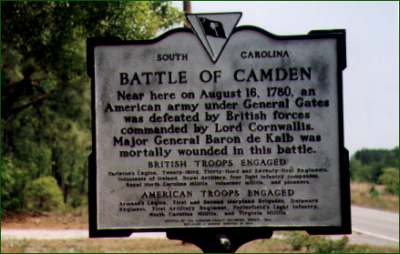
|
The site of the Battle of Camden itself is north of the city. It is
remembered only by a state historical marker beside a side road, backing on to
a patch of undeveloped forest. When I commented on the lack of a park, Janie's
wry response was on the lines of "We're trying to forget this one." [A group of folks are trying to
change the situation. Check out their
website.]
Like Cowpens, the flanking swamps which were so significant in defining the lines of battle and where the opposing armies could maneuver are only a memory. Assuming the modern road runs close to the location of the one that existed in 1780 then what was once swamp is now farm fields and patches of forest. |
| A few dozen feet back in the forest, this marker stands on the approximate site where "Baron" De Kalb was mortally wounded. Taken prisoner by the British during the battle, he died later of his injuries. Kalb's claim to the title "Baron" was phony, but he was a brave and tenacious soldier. |
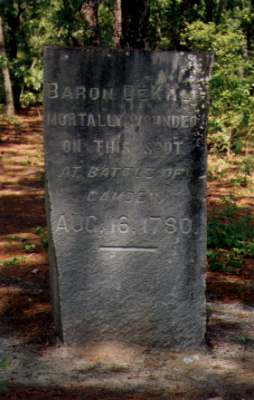
|
Camden itself is the oldest inland town in South Carolina, dating back to the 1750s. It remains a small, picturesque town, still built -- so I'm told -- on a street grid laid down before the Revolution.
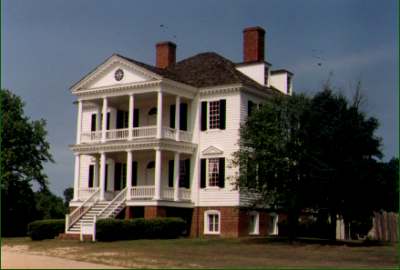
|
During his periods of residence in Camden, Cornwallis took over the house
of Whig leader Joseph Kershaw. The house was also occupied by Lord Rawdon
until his withdrawal to Charleston in 1781. Kershaw spent the war in exile as
a rebel sympathizer, but his wife and family remained in residence.
The Kershaw house survived the Revolution without damage, but it was burned during the Civil War. The present "Kershaw-Cornwallis House" is a modern reconstruction built on the old foundations in the 1970s from drawings and documentary descriptions of the original building. It's the main attraction in a restoration complex known as "Historic Camden." |
| This is the back of the house, and part of the garden -- which is home to some very bold rabbits. The site was closed the day we visited, so we were only able to walk around the exterior. On my next visit, a year later, I saw the interior, which is beautifully finished in period style. It's very easy to forget it's a modern reconstruction. |
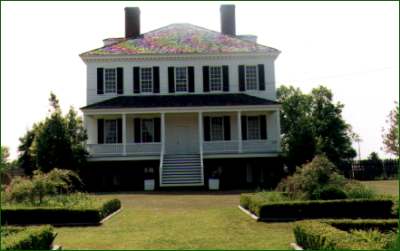
|
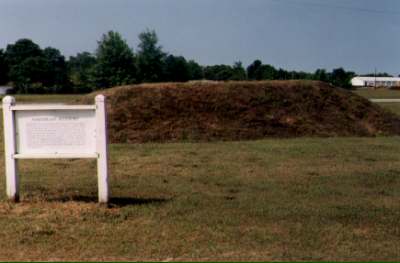
| Also in the restored complex are various odds and ends of fortifications, largely mock-ups. Cornwallis and Rawdon fortified the town for use as a supply post, encircling it with a palisade and several redoubts. This photo shows the remains of one of the redoubts, not necessarily authentic. |
We finished our day in Camden with a delightful dinner with Howard Burnham, who lives nearby. Howard performs several one-man stage shows relating to the Revolution, including a portrayal of Lord Cornwallis -- which I dearly hope to see one day -- and a performance as Banastre Tarleton in old age called "The Bubble Reputation" which I can highly recommend. We found a motel just out of town for the night, then took off next morning in search of the Richardson cemetery.
| [ Index ] | [ Previous ] [ Next ] |
| Return to the Main Page | Last updated by the Webmaster on January 30, 2004 |